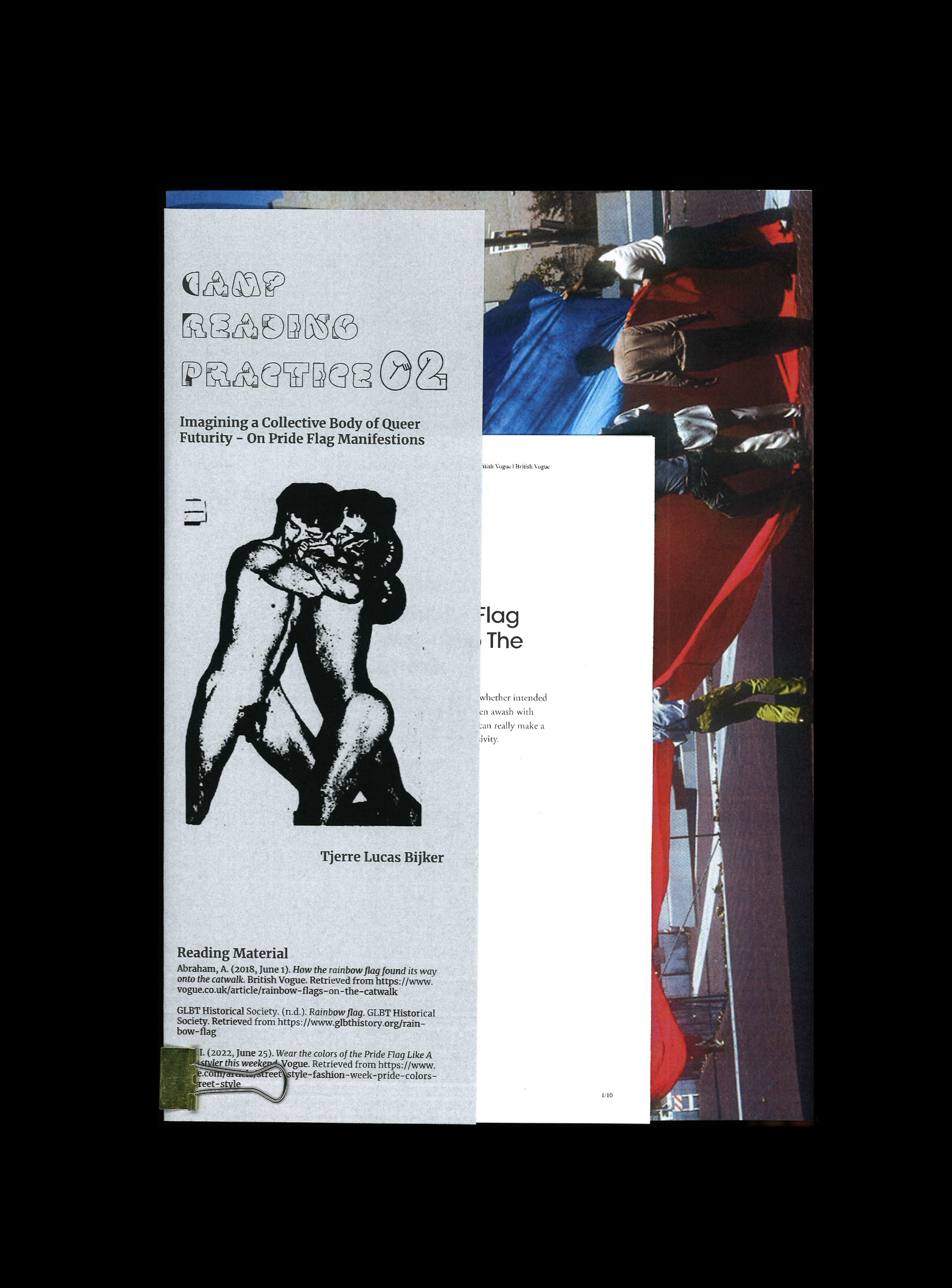(2023)
Text - Design Research -Workshopping
camp reading practice
Existing within the realm of How To Subvert the Straight-Line, I designed the critical reading method of the Camp Reading Practice: a transformative approach that invites the reader to delve into the depths of camp aesthetics and its political implications. The Camp Reading Practice involves identifying the labor involved in producing queer objects and messages, as well as detecting the camp message in contemporary representations of queerness. Through group discussions and analyses, you can disidentify and disentangle the visual language surrounding queerness in mainstream fashion media. By comparing commodified materials with original subversive sources, such as zines and liberational queer practices, you'll gain insights into the transformation of subversive objects into commodities of exchange value.Text - Design Research -Workshopping
camp reading practice
![]()
Through a Camp Reading Practice, you can actively resist the normalization and commodification of queerness in mainstream media. By injecting critical analysis and liberational, subversive texts into the current representation of queerness, you open the door to utopian thought processes and promote queer thought creation.



‘Camp Reader’ booklet, as included in How To Subvert the Straight-Line
camp Reading Workshop 01
On Queer Communes and Chosen Family
In fact, some participants even discerned that the target audience for both the article and the collection was a wealthy demographic, specifically middle-class individuals who attend pride events and feel the need to purchase ‘seemingly queer goods’ as a form of conspicuous consumption. This insight shed light on the co-option of queer visual language and the depoliticization of queer subversion, where once revolutionary ideas of chosen family and queer communes, as described in the Gay Liberation Front Manifesto, have now been reduced to mere marketing strategies. As such, the reading of the Manifesto also provided participants with historical context, elucidating how these terms originated from subversive locales and were once radical concepts that challenged mainstream societal and capitalist norms. However, it was striking to note how these subversive ideas have now been repackaged and commodified in contemporary fashion articles and campaigns.
[i] Queer communes were envisioned as spaces where individuals could explore their sexuality, build relationships, and create an alternative culture based on freedom and equality, free from the oppressive constraints of the capitalist world. These communes represented a vision of a new kind of society, rooted in mutual support and shared resources.
![]()

camp Reading Workshop 02
Imagining a Collective Body of Queer Futurity - On Pride Flag Manifestations





























